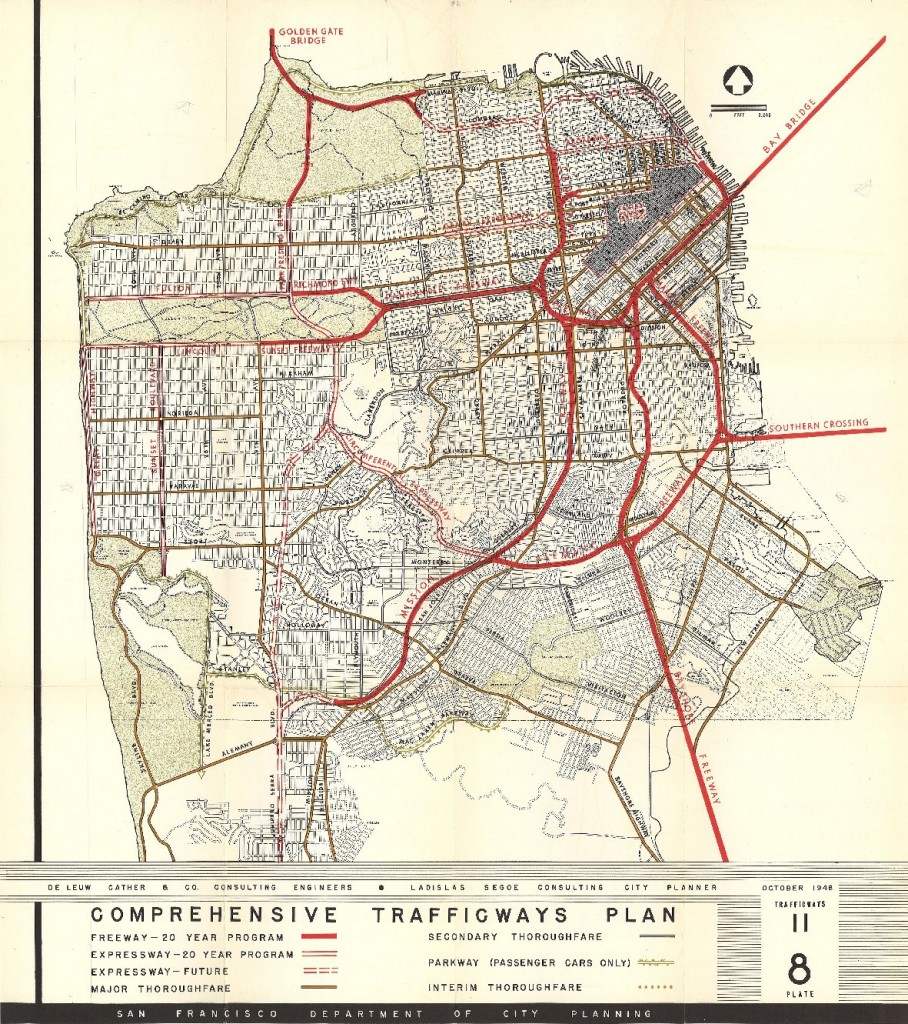
After World War II, San Francisco was just as tempted as other American cities to build a vast freeway system. In fact, a 1948 San Francisco Planning Department map that was adopted in 1951 shows the intention to build 10 freeways crisscrossing the city. The Bay Bridge would be connected to the Golden Gate Bridge via the Embarcadero Freeway, and freeways would extend all the way into the Richmond and Sunset neighborhoods. If the city had built all the freeways on this map, Mission Street would be a freeway!
So, what happened?
The Bayshore (101) and Southern (280) freeways were completed without much fuss and still serve the city well today. But San Francisco residents started organizing against the rest of the planned highways that were to reach north of Market Street and into their backyards.
In 1959, the anti-freeway movement came to a head in what has been called the Freeway Revolt, when neighborhood groups presented the Board of Supervisors with a petition signed by 30,000 people asking to cancel seven of the 10 planned freeways, including the Embarcadero Freeway, for which construction already had begun. Construction workers had completed 1.2 miles of the Embarcadero Freeway before the work was halted. The unfinished roadway jutted out just past the Broadway exit.
That freeway became a political football for many more years, until the Loma Prieta earthquake in 1989 rendered it unsafe and it was torn down.
